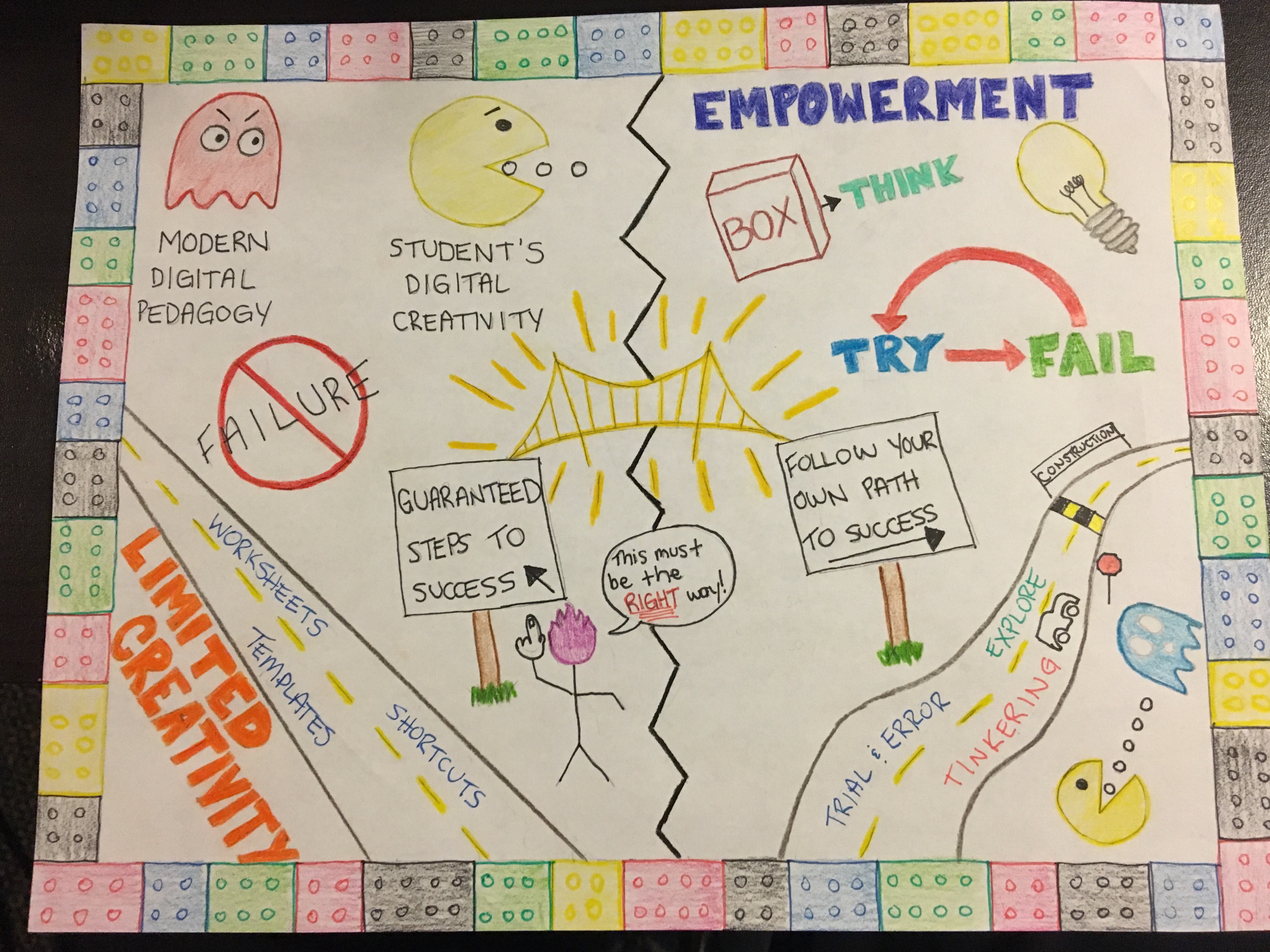After exploring Ontario Extend’s Technologist Module in considerable depth, I chose to reflect on its contents in the form of a twitter essay. I’ve used this medium before, and I really did want to use something new this time, but every time I started on a new medium I felt I wasn’t able to to convey my thoughts as well as a twitter essay allows me to. I like the fact that a twitter essay forces me to make bold, concise points for each tweet, making for a simple yet effective train of thoughts explaining the overall article or in this case, module. I also really love adding GIFS to each tweet as it ads a sense of humour, which is something I tend to gravitate to.
After going through the module in class, I thought I had a pretty good grasp of the major concepts behind integrating new technology tools in the classroom. When I took the time at home to really navigate the module and follow all of the links, I realized there was a lot more information than I had thought. I really did find myself down a rabbit hole on the internet. That being said, I found a lot of valuable information regarding the process of introducing new tech tools in the classroom. I really like the breakdown of ‘design-thinking’ into 5 key elements as it make its much easier to understand. I found it really easy to separate the elements and give each one their own tweet or two, allowing me to expose the most critical information for each concept. While exploring these key elements in greater detail, I really felt a theme starting to emerge. This really shouldn’t come as much of a shock to anyone in this program, but the focal point of tech integration in our classrooms has to be our students. Yes, we need to find a tool that works for us, and that we are comfortable with, but at the end of the day our students needs are our main concern. Whether it’s gathering ideas from your students before you even start brainstorming (empathize), or giving the students a chance to interact and explore the tool after the prototype stage, the entire process has to be student-centred.
Gaining student feedback is essential, and I found it to be a very effective practice during my time in practicum. Although I didn’t allow the students to call all the shots, I definitely listened to what they had to say after quickly realizing that sticking strictly to my lesson plan was not going to work in my favour. For example, my task during the first week of practicum 2 was to run a basketball unit, simple enough, right? The first 2 or 3 days went okay, but I quickly realized that a lot of the boys were getting bored. They would tell me every day they didn’t want to play basketball but I stuck to my guns and dragged through my drills and games. When I had a talk with my AT about the lacking motivation levels, he made a suggestion that was so simple, yet made so much sense. Give them a day off. All they ever wanted to do was play dodgeball, so I decided to split up my basketball lesson with a day of dodgeball and other various games. They loved it, and seemed to be a little happier when returning to basketball the next, although not entirely thrilled. The message here is that we need to hear our students concerns, and cater to them whenever possible.
I don’t consider myself to be a tech wiz by any means, and I really found this module broke down the process toward successful integration in a way that I could follow. I find that 3 of the 5 key elements in design-thinking are things we already do on a daily basis with our students. Empathy is part of the job, as educators we have take our students needs into account every single day, every single class whether we are using tech tools or not. Defining specific challenges that are present for the students in our classes is also something we must do on the regular, and of course, we are always connecting the lessons we teach to our curriculum. The two unique elements presented in the module are ideate and prototype. These are specific to creating new technological tools, and I thought the module did a great job of explaining these concepts and how to use execute them purposefully. I also found this module really helped me reform my own definition of digital literacy, and what it means within the confounds of a classroom.
1. In education, one of my biggest concerns is keeping my students actively engaged. I want to make learning fun & exciting. Digital tech is the way of the present and certainly the future, how can we use it to tackle challenges faced by our students? #UWinDig #OntarioExtend pic.twitter.com/VRhPcePpAu
— Andrew P. (@AndrewP87202850) February 20, 2019

